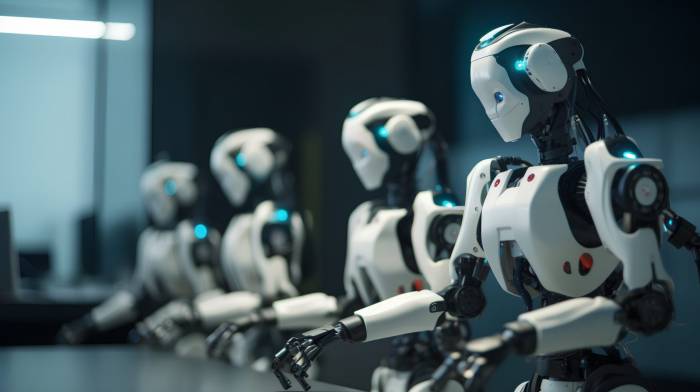Beijing (Agencies): China’s humanoid robots are rapidly advancing from futuristic prototypes to practical solutions across various industries, with applications ranging from industrial production to household tasks—and even preparing to compete in a half-marathon this April in Beijing’s Daxing district.

A leading robot manufacturer in Guangdong Province has reported a surge in orders since the beginning of 2025. Among its most advanced models is the LeadIn D1, a humanoid robot designed for heavy industrial tasks. With a dual-arm load capacity of 40 kilograms and a bionic skeletal and muscular structure, the LeadIn D1 is capable of handling labor-intensive jobs such as lifting, material transportation, and product assembly. According to Guangzhou Li Gong Industry Co., Ltd, the robot will be officially deployed on production lines in the second quarter of this year, serving industries including aerospace, medical devices, and life sciences.
The company highlighted the robot’s capabilities in monitoring workshop capacity, tracking production progress, and improving material handling. “LeadIn D1 combines intelligent interaction with precision operations to enable digital and automated management of complex production processes,” a company representative told the Global Times on Tuesday.
In Shanghai, Fourier’s GRx Robot Series has already been trialed in automobile factories, where humanoid robots perform high-precision tasks, including the installation of live high-voltage components. The latest model, GR-2, stands 175 centimeters tall, weighs 63 kilograms, and boasts a two-hour battery life. According to a Fourier spokesperson, the GR-2 features enhanced dexterous hands designed to mimic human flexibility, allowing it to seamlessly adapt to complex manufacturing environments.
Beyond industrial settings, these humanoid robots are also finding roles in reception, scientific research, education, and healthcare. Fourier’s robots are being tested for rehabilitation assistance and other specialized services, reflecting a broader move toward integrating advanced robotics into daily life.
In the consumer sector, the humanoid robot “Tiangong” is pushing the boundaries of mobility. As the world’s first full-sized humanoid robot powered entirely by electricity, Tiangong can traverse diverse terrains—including slopes, grass, gravel, and sand. Since its debut in April 2024, the robot has been deployed for warehouse logistics and security patrols at electrical plants.
The versatility of humanoid robots will be further showcased in April when dozens of robots will participate in a half-marathon in Beijing’s Daxing district. This unprecedented event aims to test their endurance and mobility while highlighting the growing capabilities of intelligent machines.
Experts believe these advancements mark a turning point for the robotics industry. “The enhanced flexibility and precision of humanoid robots allow them to be deployed in an increasingly diverse range of scenarios,” an industry expert noted. As China continues to push the boundaries of robotic innovation, these machines are expected to play a significant role in shaping the future of work and daily life.

